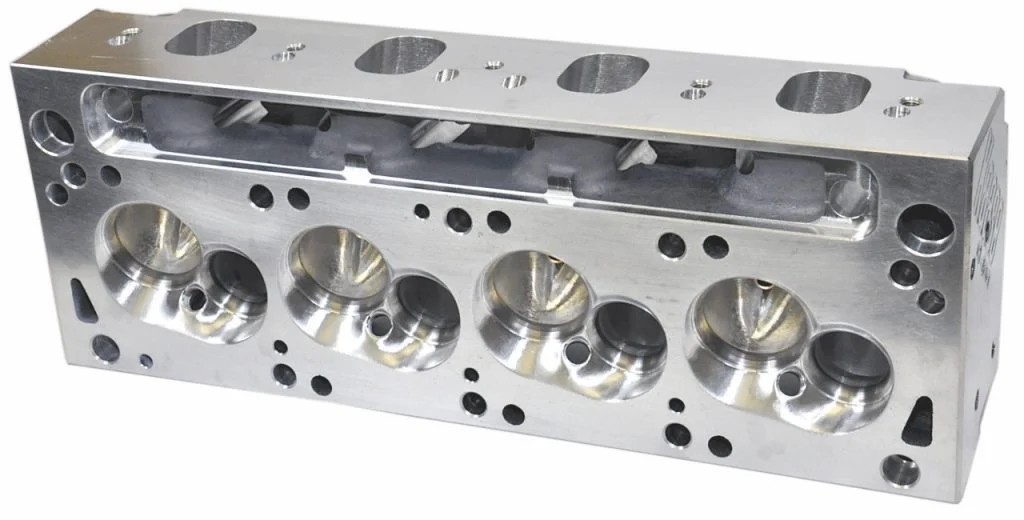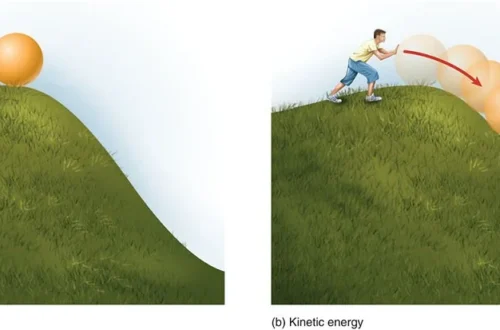What Is the 351 Cleveland and Why Aussie Heads Matter
351 Cleveland Ausralian Heads Dyno: The 351 Cleveland is part of Ford’s 335 engine family, produced from 1969 to 1982. Unlike the Windsor V8s, the Cleveland engines used canted-valve heads, larger ports, and in some variants, aggressive breathing capability.
In Australia, Ford built and imported a version of the 351 Cleveland, but with a twist: the Australian heads, often called “Aussie heads,” combined 2V-sized intake runners and valves with 4V-style closed (quench) combustion chambers. This hybrid design gave them advantages—boosted compression, better detonation resistance, and balanced airflow more suited for street use
Because of that unique architecture, Aussie heads are often prized for retrofitting or upgrading Cleveland engines in the U.S. market: they deliver some of the benefits of 4V heads without extreme port sizes that hamper low-end performance.
Flow Characteristics & Head Design
One of the key strengths of the Aussie head design lies in the flow balance and combustion chamber:
-
The intake runners remain relatively modest (2V style), which helps maintain air velocity at moderate to lower RPMs.
-
The closed chambers (in contrast to open chambers of some North American 2V heads) enhance compression and speed up flame travel, improving efficiency and torque.
-
The result is a more forgiving powerband for street use—strong in midrange yet capable on the top end.
However, the Aussie heads do have limits: they’re not as extreme as big 4V heads in absolute flow at very high lifts, so they require the rest of the build (cam, intake, exhaust) to be well matched.
Dyno Performance: What to Expect
When you dyno test a 351 Cleveland engine fitted with Aussie heads, certain performance trends typically emerge:
-
Better midrange torque: Because of efficient runner size and combustion chamber design, you often see stronger torque between ~2,500 to 5,500 RPM compared to aggressive 4V heads that do best higher up.
-
Moderate top-end gains: While Aussie heads help, they won’t match fully optimized 4V heads at very high RPMs unless the rest of the build is pushed (cam, port work).
-
Compression boost: Swapping from open-chamber heads to closed chambers often gives 0.5 to 1 point additional compression, which translates into better torque and crisper throttle response.
Several builder threads and dyno logs show such builds:
-
A “351C build with Aussie heads” thread features dyno plots done with both a dual-plane and single-plane intake, showing how the head/intake combo shifts the torque and power curves.
-
Other dyno comparisons of 2V Cleveland heads (stock) indicate 300–320 hp range at the flywheel, though those are with completely stock heads and setups.
Thus, an Aussie-head 351C in a semi-moderate build might reliably produce 350–450 hp and 350–420 lb-ft of torque, depending on cam, displacement, and supporting components.
Building a 351 Cleveland with Aussie Heads: Key Considerations
To maximize dyno potential when using Aussie heads, attention must be paid to supporting parts and setup. Here are key areas:
Camshaft & RPM Range
Because Aussie heads are not ultra-high-flow at extreme lifts, choosing a cam that operates in a broad mid-to-high range (e.g. 5000–6500 RPM) often gives the best balance. Overly aggressive cams may outpace the head’s ability to flow.
Intake & Carburetion
Using an intake manifold whose ports match the Aussie heads’ runner size is vital. Many traditional 4V manifolds are oversized. Some builders use dual-plane intakes or specialized ones that suit 2V-style runners while still feeding 4-barrel carbs.
Exhaust & Headers
Good headers and exhaust design ensure that the Aussie heads’ improved breathing is not undone. Proper tubing diameter, length, and collector design help extract the power.
Compression & Pistons
To take advantage of the closed chambers, using pistons that suit the chamber volume is important so you maintain desired compression. Many Aussie-head retrofits benefit from domed or semi-dome pistons.
Porting & Head Work
Even though Aussie heads are well engineered, mild porting (smoothing, bowl work) and polishing—as long as it’s conservative—can yield gains without upsetting the flow balance. But over-porting may push them into the same weaknesses as large 4V heads.
Comparisons: Aussie Heads vs Stock 2V or 4V Cleveland Heads
Here’s how Aussie heads typically stack up:
| Head Type | Strengths | Weaknesses |
|---|---|---|
| Aussie Heads | Balanced airflow, increased compression, good torque, street-friendly | Not extreme high-end flow, need matched buildup |
| Stock 2V Heads (North American) | Good for low-RPM torque, simpler design | Open chambers (lower compression), limited high-end power |
| Stock 4V Heads | High flow at high RPM, great peak power potential | Oversized for street use, poor low-RPM behavior if unmatched |
Indeed, Aussie heads are often considered the “middle ground” — combining the best traits of 2V and 4V head philosophies.
Builds using Aussie heads often outperform stock 2V setups in both torque and horsepower, while being more usable on street than a 4V head tuned for race.
Challenges, Myths & Real-World Observations
Head Rarity & Cost
One challenge is that original Aussie heads are rare and often command a premium. Finding good, crack-free examples can be difficult, especially outside Australia.
Misalignment & Conversion Problems
Retrofits sometimes require adaptation work—port-matching, gasket compatibility, and ensuring coolant/oil passages line up. Improperly done runs the risk of leaks or flow losses.
Dyno Variability
Dyno numbers can vary due to many factors (dyno type, correction factors, tuning, intake/exhaust). Comparing a well-tuned Aussie-head build to a poorly tuned 4V build is misleading.
“They Can’t Outflow 4V” Myth
Some contend Aussie heads cannot match 4V heads. While true in raw maximum flow at extreme lift, real-world drivability and usable power often favor Aussie heads in well matched builds.
Modern Aftermarket Alternatives
Instead of hunting for original Aussie heads, vendors like Trick Flow created Power Port Cleveland heads that emulate the Aussie design: moderate ports, closed quench chambers, and modern materials. These give builders a bolt-on route without the uncertainty of old castings.





